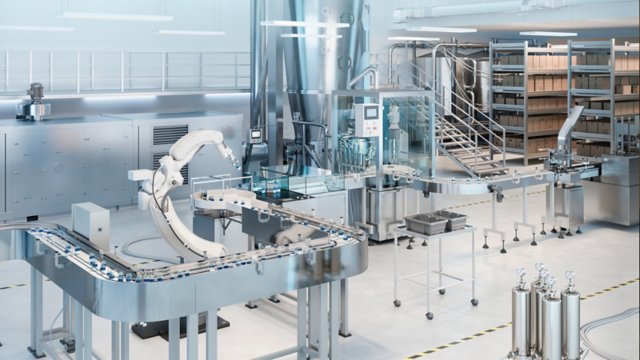The Life Sciences manufacturing sector faces unique challenges in today’s rapidly evolving pharmaceutical and biotechnology landscape. As production demands become more complex and regulatory requirements more stringent, manufacturers must adopt sophisticated control strategies that enable both precision and adaptability. Plant-wide control and integrated architecture systems have emerged as the central solutions for meeting these demands.
The Strategic Value of Integration
At its core, plant-wide control represents a fundamental shift from segmented unit-based operations to a fully integrated manufacturing ecosystem. This approach creates a unified control framework that can help coordinate all manufacturing processes, unit operations, quality systems, and operational parameters across the facility. A manufacturing environment with these attributes can respond dynamically to changing production requirements while maintaining strict quality standards.
Enabling Operational Flexibility
Modern Life Sciences manufacturing demands unprecedented levels of operational flexibility. Production facilities must efficiently transition between different products, adjust batch sizes, and accommodate new processes without compromising quality or compliance. Integrated control architectures make these transitions possible by providing:
- Centralized process management that allows rapid reconfiguration of manufacturing parameters
- Seamless communication between upstream and downstream processes
- Real-time adjustment capabilities across the entire production chain
Impact on Scalability
Scalability extends beyond simply increasing production volumes. It requires the ability to integrate new technologies, expand production capabilities, and adapt to emerging therapeutic modalities. Plant-wide control systems provide the infrastructure necessary for sustainable growth by:
- Facilitating the integration of new equipment and processes without disrupting existing operations
- Enabling modular expansion of manufacturing capabilities
- Supporting the implementation of new production techniques with minimal system redesign
Data Integration and Compliance
The regulatory environment in Life Sciences manufacturing demands comprehensive data documentation and process validation. Integrated architecture creates a single source of truth for operational data, including:
- Complete process visibility across all manufacturing operations
- Automated data collection and documentation
- Streamlined compliance reporting and audit preparation
Supporting Manufacturing Innovation
As the industry moves towards advanced manufacturing paradigms, such as continuous processing and personalized medicine, the value of plant-wide control becomes even more pronounced. These integrated systems provide the foundation for:
- Implementation of advanced process control strategies
- Integration of artificial intelligence (AI) and machine learning (ML) capabilities
- Development of predictive maintenance programs
- Real-time quality assurance and process optimization
The Business Case for Integration
While the initial investment in plant-wide control may be substantial, the long-term benefits justify the cost. Organizations that implement integrated control architectures typically see:
- Reduced operational complexity
- Greater workforce efficiency
- Improved manufacturing efficiency
- Enhanced product quality and consistency
- Lower compliance-related costs
- Increased facility utilization
Looking forward
The future of Life Sciences manufacturing will be defined by facilities that can rapidly adapt to new production requirements while maintaining the highest-quality standards. Plant-wide control and integrated architecture systems are not merely operational tools- they are strategic assets that enable manufacturers to meet current demands while preparing for future challenges. As the industry continues to evolve, those organizations that invest in comprehensive control strategies will be best positioned to capitalize on new opportunities and maintain their competitive advantage in an increasingly complex market.








